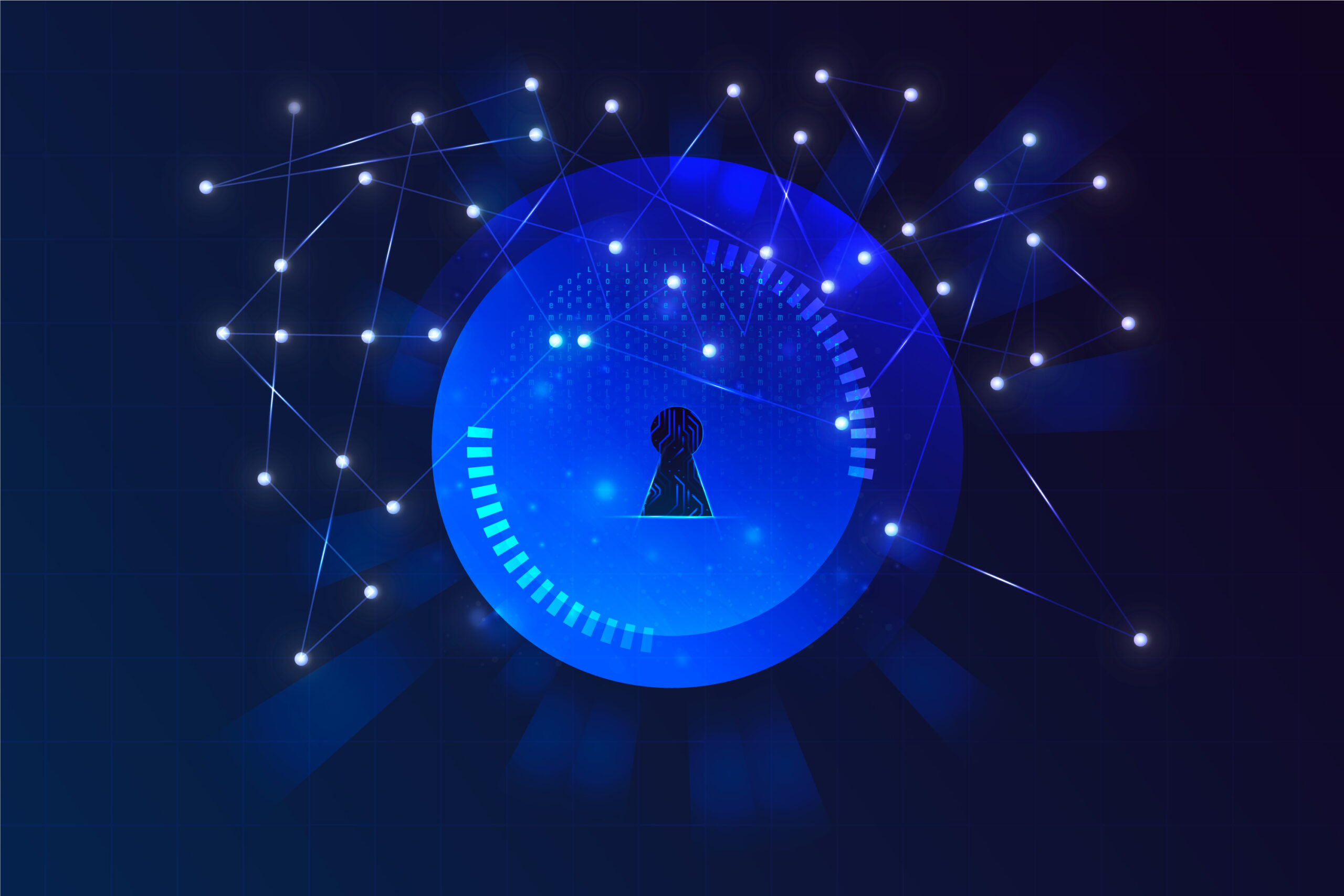In the rapidly evolving landscape of digital technology, the way we secure our information has undergone significant transformations. The traditional reliance on passwords, a concept rooted in the early days of computing, is gradually becoming obsolete. As cyber threats continue to advance in sophistication, the need for a more secure and user-friendly authentication method has become paramount. Enter the era of passkeys – a futuristic approach to digital security that promises to revolutionise the way we protect our sensitive information.
The Inherent Flaws of Passwords: A Journey Into the Past
Passwords have been the go-to method for user authentication since the inception of digital systems. However, their effectiveness has diminished over time due to a variety of inherent flaws. One of the primary issues is the human tendency to create weak and easily guessable passwords. Common words, birthdays, and easily accessible personal information make it simpler for attackers to breach security measures.
Moreover, the sheer volume of passwords individuals must remember has led to the prevalence of password reuse across multiple platforms. This risky practice magnifies the consequences of a security breach, as a compromised password on one site could potentially grant unauthorised access to various accounts.
The rise of sophisticated hacking techniques, such as brute force attacks and phishing scams, has further exposed the vulnerabilities of traditional password systems. As a result, it has become evident that a paradigm shift in digital authentication is necessary to ensure a robust defence against modern cyber threats.
Enter Passkeys: A Paradigm Shift in Digital Authentication
Passkeys represent a significant evolution in the realm of digital security. Unlike traditional passwords, passkeys leverage advanced cryptographic techniques and cutting-edge technology to create a more secure and user-friendly authentication process.
At its core, a passkey is a unique identifier associated with an individual that goes beyond the limitations of alphanumeric combinations. It can incorporate various elements, such as biometric data, multi-factor authentication, and behavioural analysis, to establish a comprehensive profile of the user. The biometric data used can come from quite a pool of sources thus enhancing the security further. This multifaceted approach adds layers of security, making it exponentially more challenging for unauthorised users to gain access.
The Biometric Advantage: Your Body as the Ultimate Passkey
One of the most promising aspects of passkeys lies in the integration of biometric data as a primary authentication factor. Biometrics, encompassing fingerprints, facial recognition, voice patterns, and even retina scans, offer a level of security that goes beyond the reach of traditional passwords.
Unlike passwords, which can be forgotten or easily shared, biometric data is unique to each individual. This inherent uniqueness makes it significantly more challenging for malicious actors to impersonate or replicate, enhancing the overall security of the authentication process. As technology advances, biometric sensors are becoming more sophisticated, ensuring greater accuracy and reliability in identifying individuals.
The user experience is also greatly improved with biometric passkeys. No longer do users need to remember complex combinations of characters; instead, they can simply rely on their physical attributes to unlock secure digital spaces. This not only streamlines the authentication process but also eliminates the need for regular password changes, reducing the risk associated with forgotten or easily predictable passwords.
Multi-Factor Authentication: Fortifying Digital Fortresses
Passkeys embrace the concept of multi-factor authentication (MFA), adding an extra layer of security by combining two or more authentication factors. Traditional passwords often rely solely on something the user knows, leaving them susceptible to attacks that exploit this single factor. MFA, on the other hand, combines knowledge-based factors with possession-based or inherent factors, making it significantly more resilient to attacks.
For instance, a passkey may require the user to authenticate using a combination of a fingerprint scan and a one-time code sent to their registered device. Even if one factor is compromised, the additional layers provide an added barrier, making it exponentially more challenging for unauthorised access.
The implementation of MFA in passkeys not only enhances security but also empowers users with a greater sense of control over their digital identities. By diversifying the authentication process, individuals can customise their security measures to align with their preferences and comfort levels.
Behavioural Analysis: Unveiling the Human Signature
Passkeys of the future are not just limited to static identifiers like fingerprints or facial features; they delve into the realm of behavioural biometrics. Behavioural analysis involves studying patterns of interaction with digital devices, including typing cadence, mouse movements, and navigation habits. This dynamic approach adds another dimension to user authentication, creating a digital signature that is uniquely characteristic of each individual.
By continuously analysing these behavioural patterns, passkeys can adapt to changes in user behaviour over time. This adaptive authentication process not only bolsters security but also minimises the inconvenience for users. If a sudden change in behaviour is detected, the system may prompt for additional authentication measures, ensuring that the digital space remains secure without unnecessary hindrances for the legitimate user.
The Road to Passkey Adoption: Overcoming Challenges and Resistance
While the advantages of passkeys are clear, the path to widespread adoption is not without its challenges. Transitioning from established password systems to passkeys requires overcoming technical, regulatory, and psychological barriers.
Technological compatibility is a critical aspect of passkey implementation. For organisations to integrate passkeys seamlessly, their systems must be equipped with the necessary infrastructure to support biometric sensors, behavioural analysis algorithms, and other advanced authentication technologies. Updating legacy systems and ensuring interoperability can be a time-consuming and resource-intensive process.
Moreover, regulatory frameworks must evolve to accommodate the nuances of passkey authentication. Privacy concerns surrounding the collection and storage of biometric data necessitate robust legal frameworks that strike a balance between security and individual rights. Clear guidelines on data protection, consent, and user rights are essential to building trust in passkey systems.
Perhaps the most formidable challenge is overcoming the inertia associated with ingrained habits. People are resistant to change, especially when it comes to familiar routines like typing in passwords. Educating users about the enhanced security and convenience offered by passkeys is crucial for overcoming this resistance. Additionally, organisations must invest in user-friendly interfaces and provide seamless migration paths to encourage a smooth transition.
The Future of Passkeys: A Secure and Seamless Tomorrow
As the world grapples with increasingly sophisticated cyber threats, the transition from a password past to a passkey future is not a matter of if, but when. The advantages of passkeys, including enhanced security, user-friendly authentication, and adaptability, position them as the logical successor to traditional passwords.
The integration of biometrics, multi-factor authentication, and behavioural analysis in passkeys represents a holistic approach to digital security. This multifaceted authentication not only safeguards against current threats but also ensures the adaptability needed to counter future challenges.
As technology continues to advance, the capabilities of passkeys will only grow. Innovations such as blockchain integration for secure storage of biometric data and the use of artificial intelligence to continuously refine behavioural analysis will further solidify passkeys as the gold standard in digital authentication.
In conclusion, the shift from passwords to passkeys marks a pivotal moment in the evolution of digital security. By embracing the advancements in biometrics, multi-factor authentication, and behavioural analysis, we can create a future where individuals can navigate the digital realm with confidence, knowing that their sensitive information is protected by a robust and user-friendly authentication system. The passkey future beckons, promising a secure and seamless tomorrow for the digital age.



